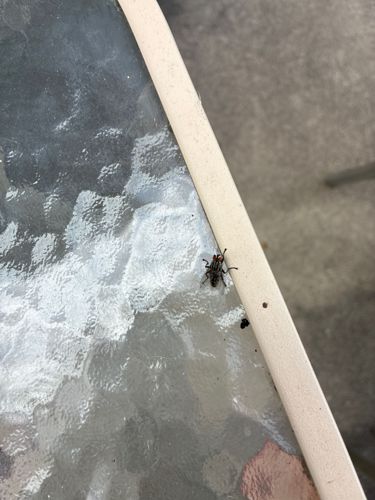Fly (likely a House Fly or similar Muscid)
Scientific Name: Likely Musca domestica (House Fly), but could be another species within Muscidae or a related family.
Order & Family: Order: Diptera, Family: Muscidae (most likely)
Size: Typically 4-8 mm in length, though some species can be larger or smaller.

Natural Habitat
Flies are highly adaptable and found in diverse environments worldwide, especially in areas with human habitation. They thrive in places with access to food sources, moisture, and breeding sites such as garbage bins, compost piles, unsanitary conditions, farms, and homes.
Diet & Feeding
Adult flies typically feed on a wide range of decaying organic matter, including rotting fruits, vegetables, animal carcasses, and feces. They also consume sugars, liquids, and other human foods. Larvae (maggots) feed on the decaying matter in which they are laid.
Behavior Patterns
Flies are typically active during the day, performing various behaviors such as resting, foraging for food, mating, and laying eggs. They are known for their rapid flight and ability to land on various surfaces. Their short lifespan often involves multiple generations within a year.
Risks & Benefits
Risks: Flies, particularly house flies, can transmit various pathogens (bacteria, viruses, parasites) mechanically from contaminated surfaces to food or humans, leading to diseases like typhoid, cholera, dysentery, and food poisoning. They are considered pests due to their nuisance value and potential health risks. Benefits: In certain ecosystems, flies can play a role as decomposers by breaking down organic matter. Some species are also pollinators, though their contribution is generally less significant than bees or butterflies.
Identified on: 8/12/2025